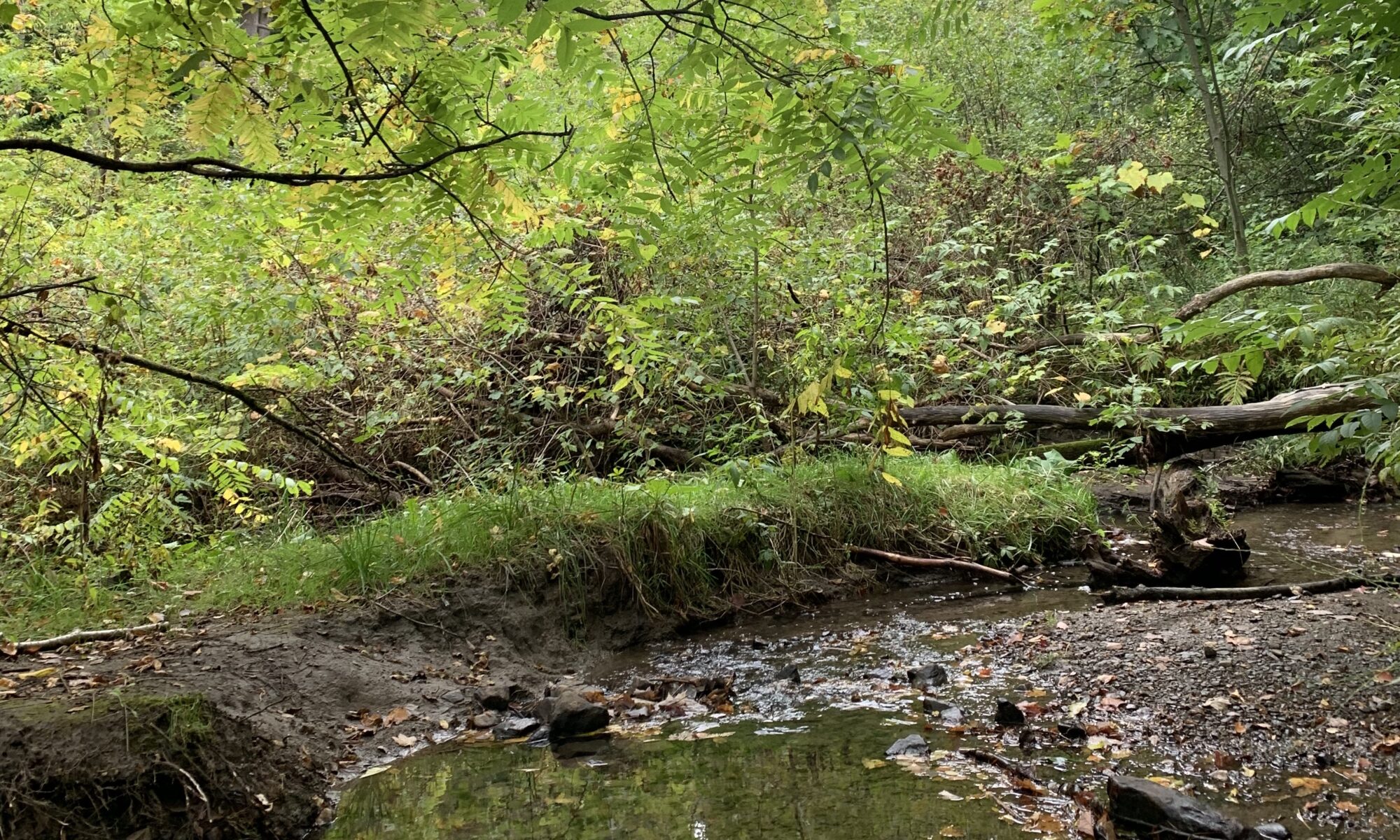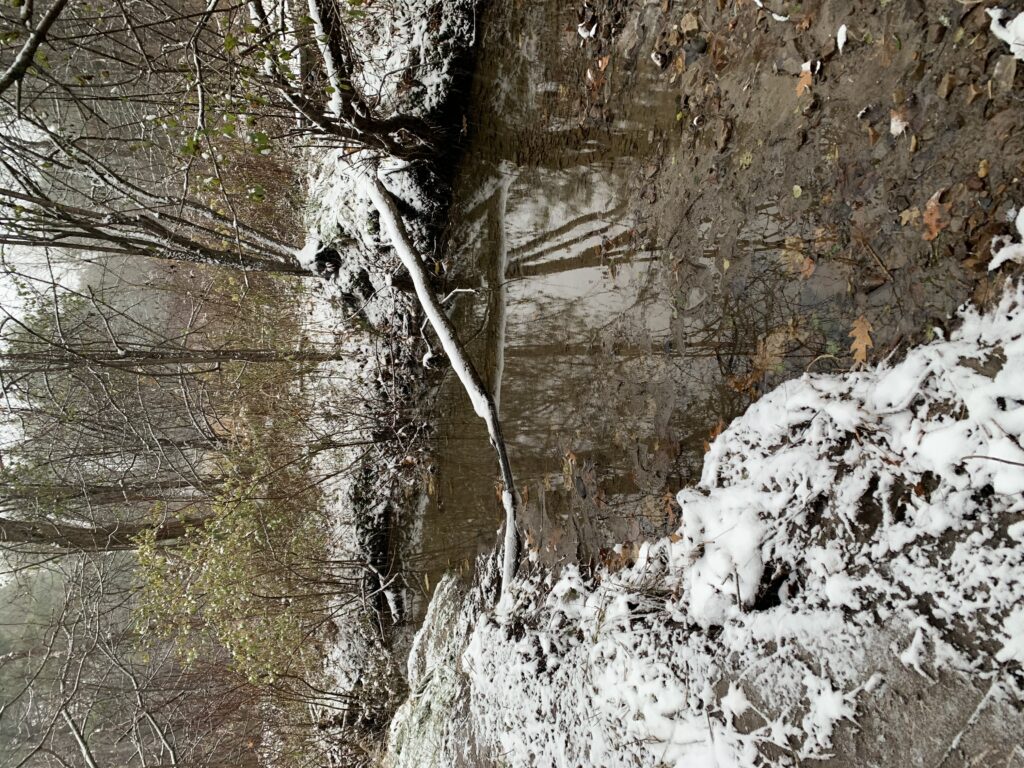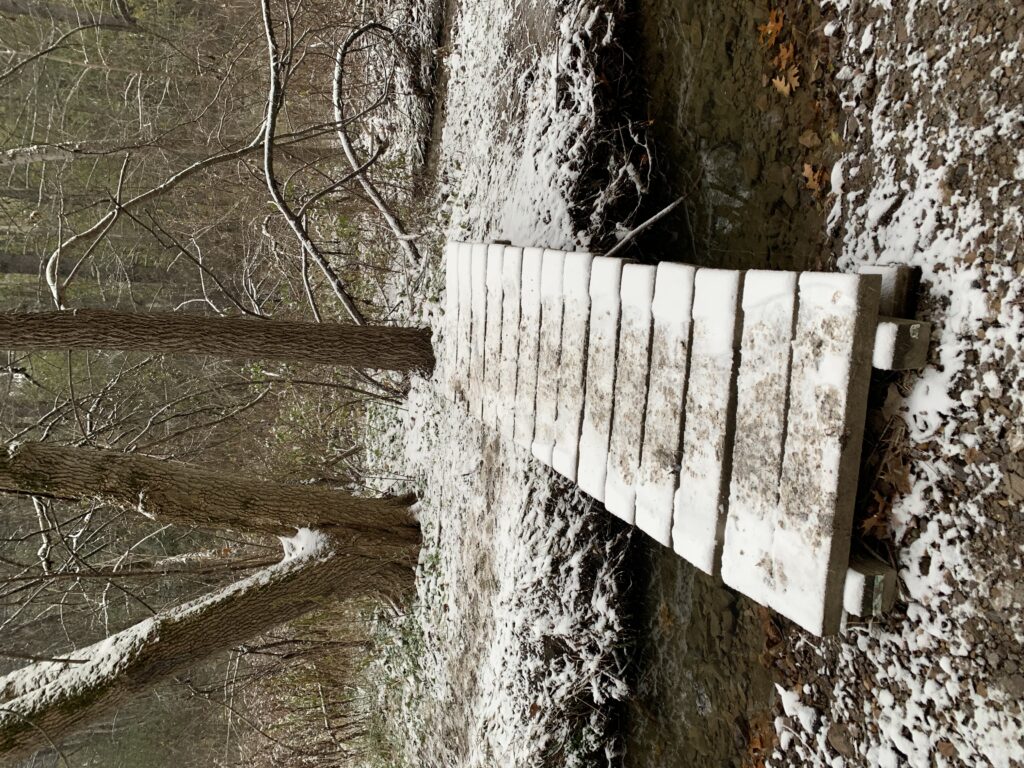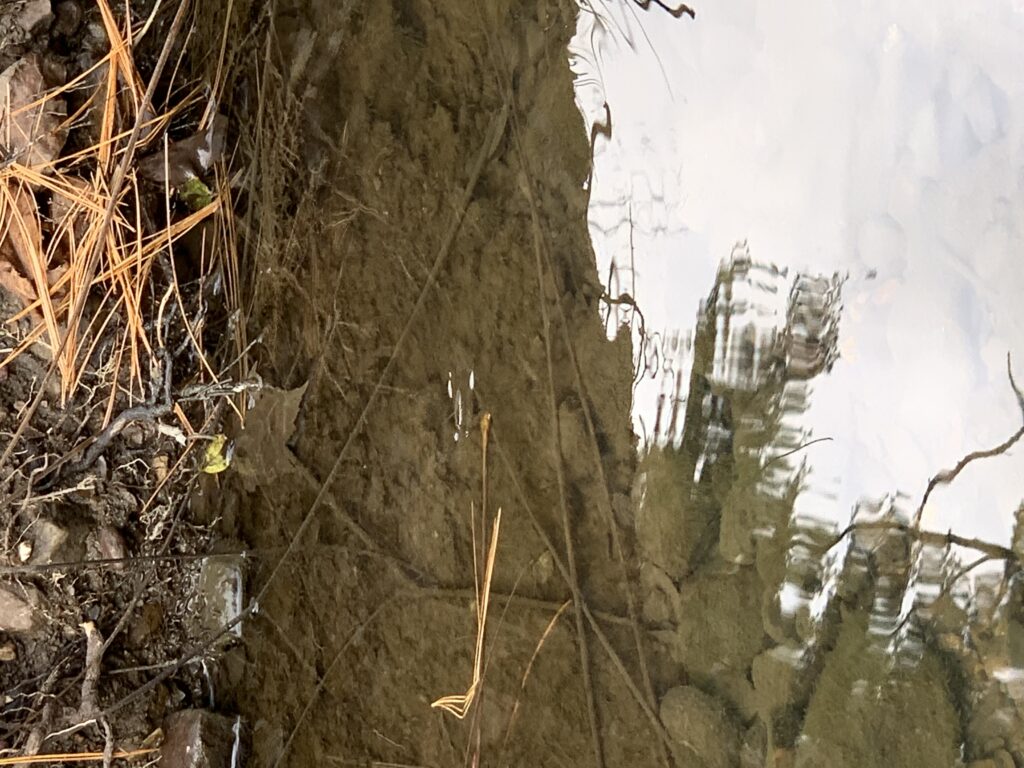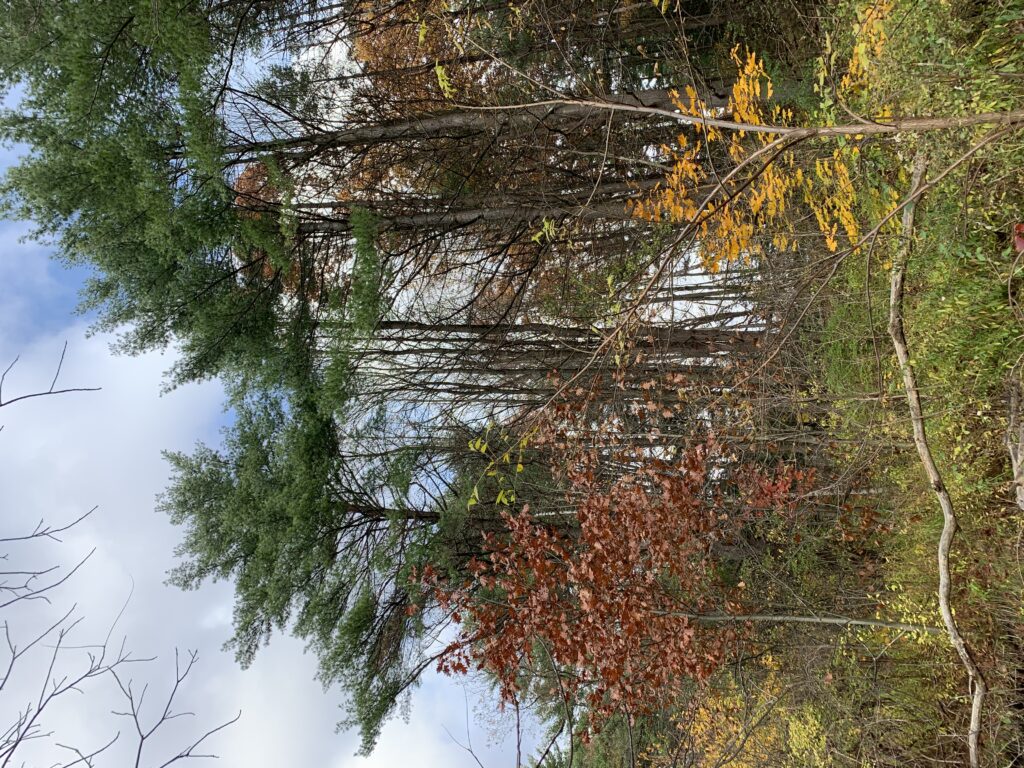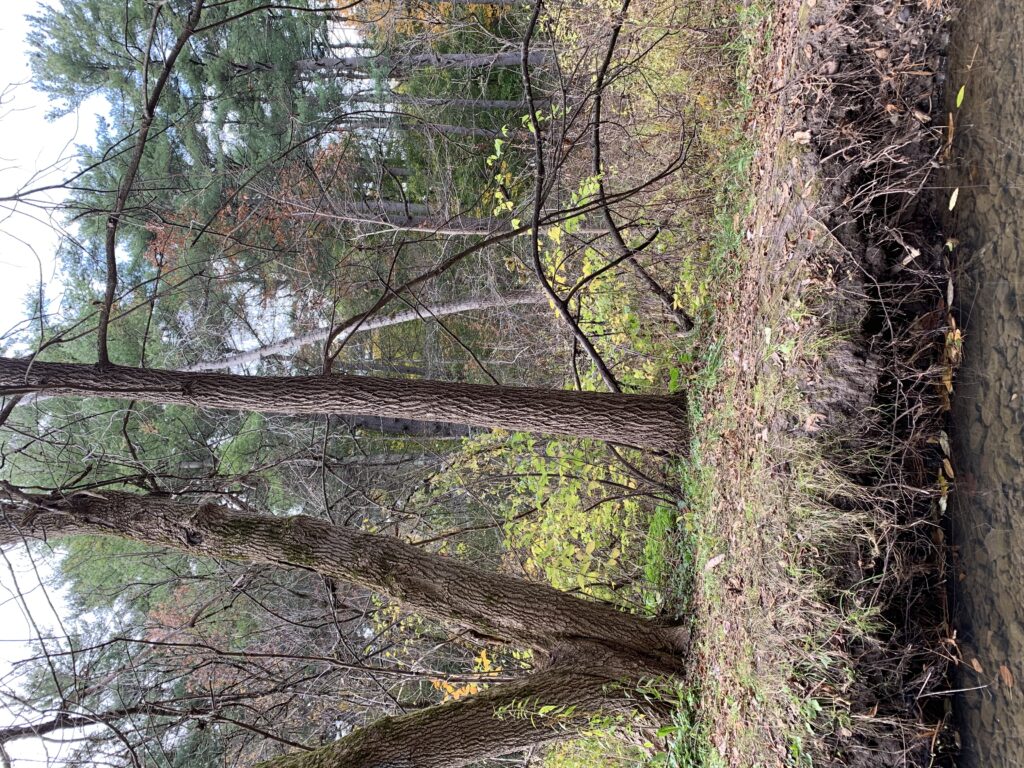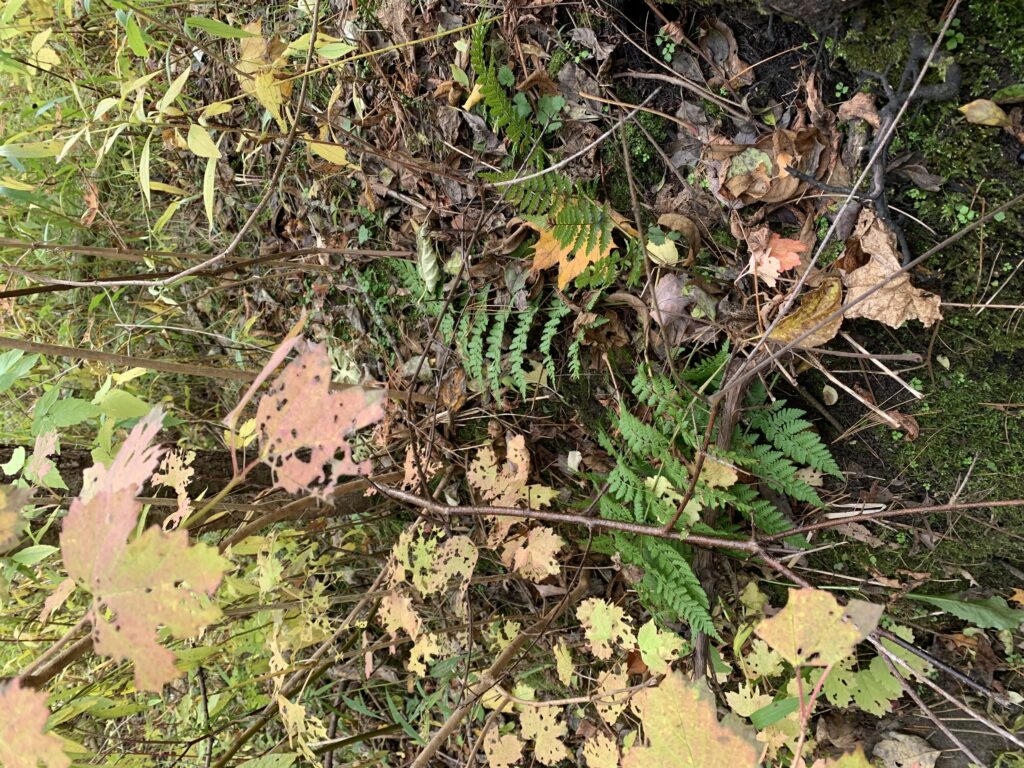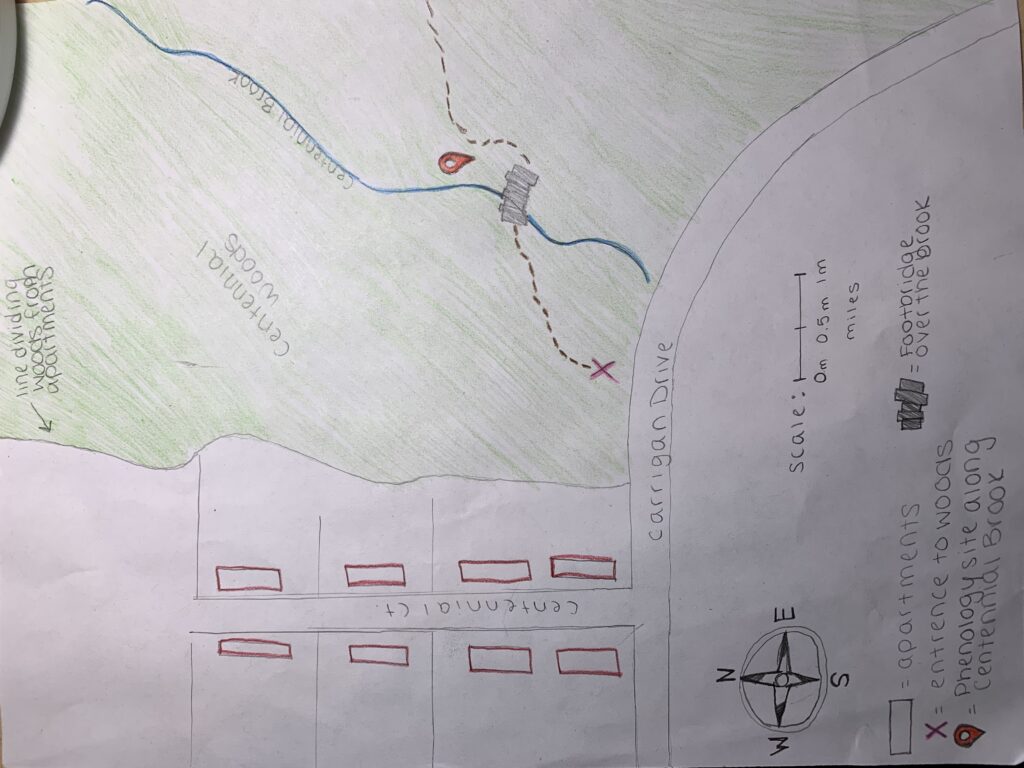When visiting my phenology blog spot it had changed quite a bit since my last visit. First of all, Burlington was experiencing its first snowfall of the year. Therefore, when walking to my phenology spot I had to be careful to not slip and fall on the mud and ice. When I reached the spot, I realized the footbridge had been moved to a different area. This is because of how high the water level had become in the brook. To know that my phenology spot had been moved around almost made me feel sad. I always sat on the footbridge and took my field notes there.
Once I reached my spot I realized how many changes had actually occurred. The ground was covered in white, powdery snow. The ground was extremely muddy and the bank of the brook was more eroded than before. However, the brook had become more narrow. I can now stand in an area where there was once water. When searching for wildlife I realized there was no sign of the minnows in the brook as well as the water striders that were once there before. There was also no sign of birds which is because they migrate during this time which is discussed in the book Naturally Curious. Almost all of the vegetation had turned brown and the trees have now officially lost their leaves.
Being from New York, I never realized how quickly the seasons changed in Burlington. The seasons changed slowly at home, fall lasted until November, winter lasted until March, and spring began in April. To know that there may still be snow on the ground in April is a scary thought. I’ve realized how I created a sense of place at my phenology spot. It almost feels like the spot from home, where I would go to enjoy nature. I understand the history behind Centennial Woods, but as change occurs, I feel as if I’m learning more and more about my spot. In terms of Vermont as a whole, as the seasons change I’m experiencing how the environment changes and how organisms adapt to this change. To know that one day we may have a whole where people are unable to enjoy nature’s gifts is frightening. I would be devastated to find that Vermont changed due to climate change or deforestation. As I spend more time here in Vermont, I feel as if this place is becoming my home.

